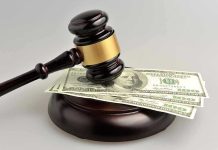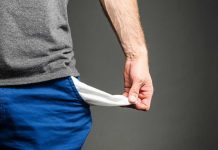
You won’t believe it: the wheels of your suitcase are carrying 58 times more bacteria than a public toilet seat—yes, the very same suitcase you’re wheeling through the airport, your hotel lobby, and probably your own home.
At a Glance
- Suitcase wheels harbor up to 58 times more bacteria than public toilet seats, according to a 2025 study.
- Experts identified dangerous microbes on luggage, including Staphylococcus, Serratia marcescens, and Aspergillus molds.
- Over 70% of travelers say they’d clean their luggage more often if they knew the contamination levels, but most don’t know how.
- The luggage industry and travel sector are facing calls for stricter hygiene standards and new product innovations.
Suitcase Wheels: The Unsuspecting Bacterial Superhighway
Let’s just say it: the next time you drag your suitcase across the living room carpet after a trip, you might as well be sprinkling your home with microscopic souvenirs from every public restroom, subway platform, and street corner you’ve rolled over. A 2025 study led by Insure and Go with microbiologist Amy-May Pointer found suitcase wheels crawling with up to 400 colony-forming units (CFU) per 3 cm²—compare that to the measly 7 CFU found on the average public toilet seat. The bottom line? The suitcase you trust to carry your clean clothes is a mobile bacteria factory, and hardly anyone is talking about it.
Pointer’s team swabbed luggage at airport train stations, uncovering a veritable zoo of bacteria and mold species. These included Staphylococcus, the same genus that can cause nasty skin infections; Serratia marcescens, which is linked to urinary tract and respiratory infections; and Aspergillus, a mold that can trigger allergic reactions and more serious health issues for vulnerable individuals. The sheer diversity and concentration of microbes are enough to make even the most seasoned traveler shudder.
Travelers in the Crosshairs: Awareness Rises, Solutions Lag
Now, I don’t know about you, but I’d love to know why, after years of government agencies fussing about “sanitizing” everything under the sun, suitcases—the very definition of high-traffic travel items—have been ignored. According to a recent survey, 72.5% of people said they’d clean their luggage more often after learning about this contamination, but here’s the kicker: 64.5% admitted they haven’t a clue which products to use or how to get the job done. So much for all that public health “guidance” we paid for during the pandemic. Travelers are left to fend for themselves, resorting to guesswork and internet tips while manufacturers and regulators twiddle their thumbs.
Suitcase manufacturers—raking in billions as the luggage market hit $46.56 billion in 2024—are suddenly scrambling to reassure customers and splash “antimicrobial” labels on their latest models. Yet, outside of marketing jargon, there’s little in the way of standardized hygiene protocols. Think about it: airlines fret over peanuts and seat belts, but the one item guaranteed to touch every filthy, germ-ridden surface from curb to baggage carousel gets a free pass. If that doesn’t sum up modern regulatory priorities, I don’t know what does.
Expert Advice: Clean It, Don’t Panic, and Ignore the Bureaucrats
Microbiologists are warning travelers to treat suitcase wheels like the biohazards they are. Amy-May Pointer recommends keeping luggage off clean surfaces and giving wheels a regular scrub with alcohol wipes or good old-fashioned soapy water. She also points out that suitcase wheels act like “microbial time capsules,” collecting every germ they encounter on their journey—no surprise, considering the average suitcase is exposed to airports, sidewalks, train stations, and public bathrooms before it ever crosses your threshold.
Here’s the punchline: most of the bacteria found aren’t deadly, especially for healthy adults. But if you or someone in your family has a weaker immune system, you’re wise to take these new hygiene recommendations seriously. And if you’re waiting for the government to swoop in with clear, sensible advice, don’t hold your breath. The only thing we’re likely to see from Washington is another round of fearmongering, followed by a new tax on “single-use suitcase wipes” or a federally mandated “luggage cleaning fee.”
Luggage Industry and Travel Sector: Scrambling for Solutions (and Profits)
The luggage industry, not exactly known for innovation, is finally facing pressure to develop easier-to-clean materials and antimicrobial coatings. Expect to see a lot more marketing around “germ-resistant” bags and, undoubtedly, a whole new line of overpriced cleaning sprays and device attachments—because there’s always a buck to be made from manufactured panic. Airlines and hotels may soon get in on the act, touting “luggage hygiene” as a new perk for travelers, but don’t be fooled: until there are actual standards in place, most of these claims will be as empty as a TSA bin at midnight.
On the bright side, heightened awareness could drive some real change. If enough travelers demand better hygiene and transparency from luggage brands, the free market—unlike the government—might actually deliver practical solutions. Until then, keep your suitcase off the kitchen table, wipe down those wheels, and remember: sometimes, the dirtiest things in life are the ones hiding in plain sight, rolling right under our noses while the “experts” are busy looking the other way.









